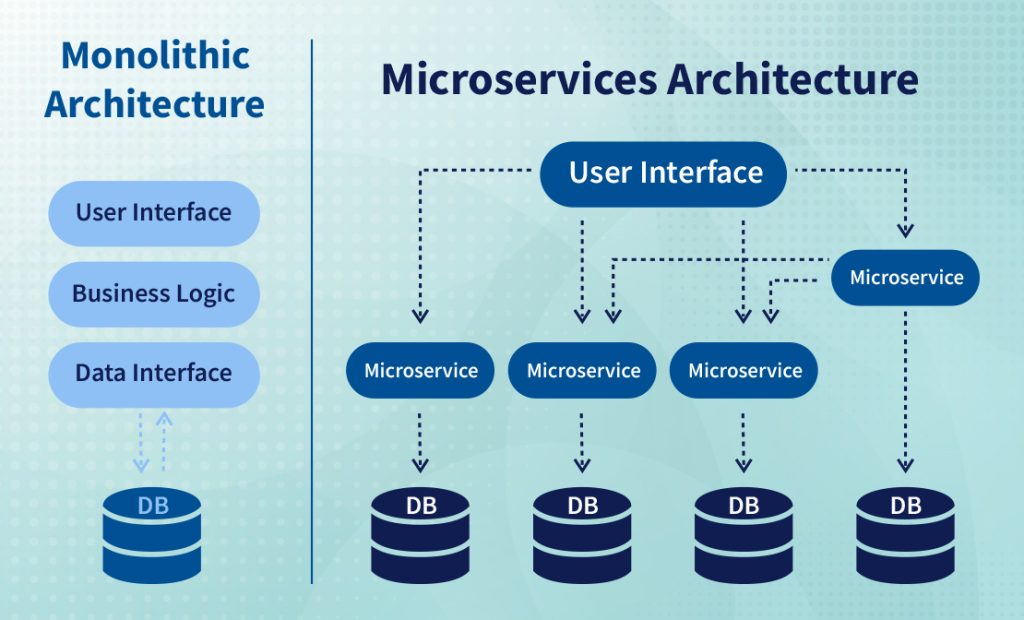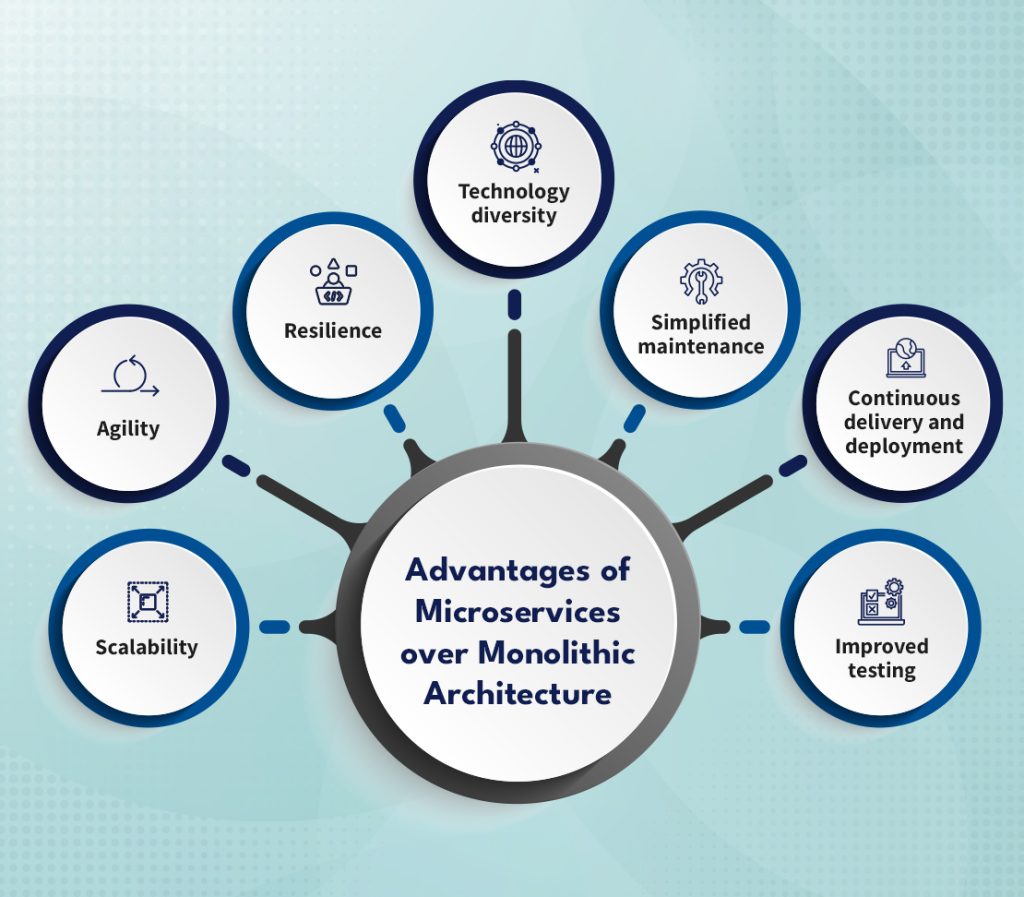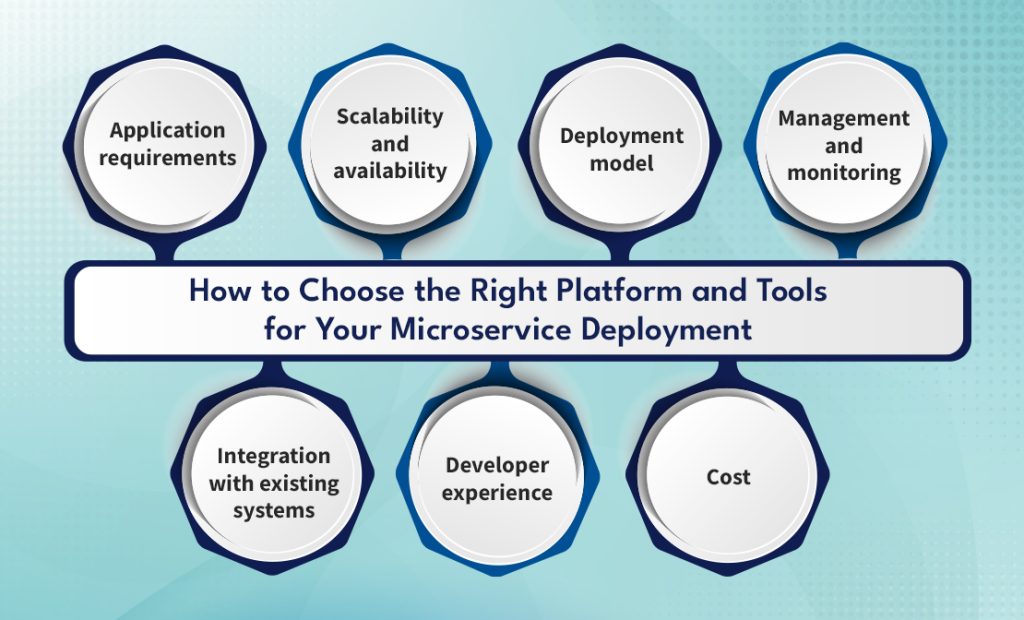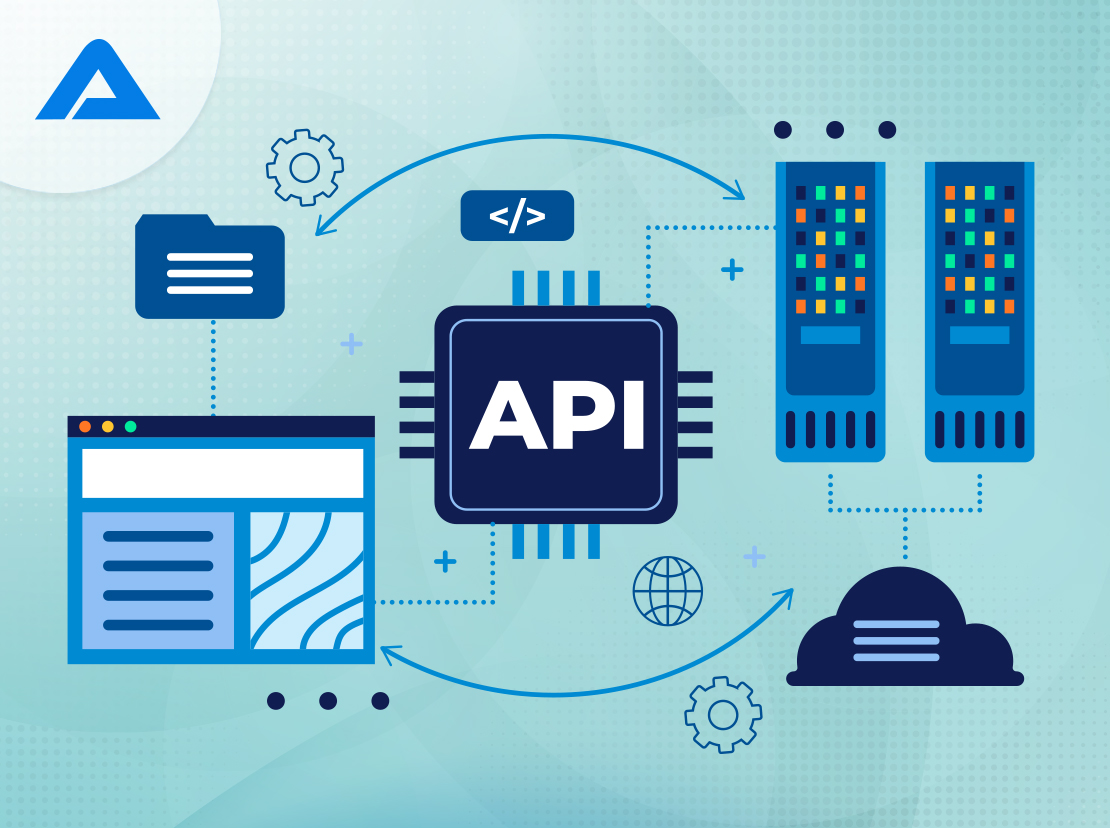The world of software development has seen a significant shift in recent years with the rise of microservices architecture. Microservices is an approach to software development that focuses on breaking down large, monolithic applications into smaller, independent services that communicate with each other. In this blog, we will explore microservices architecture, its benefits, and why it has become a popular approach to software development.
What is a Microservices Architecture
Microservices, also known as microservice architecture, is an approach to software development that structures an application as a set of small, independent, and loosely coupled services. Each service is designed to perform a specific business capability and can be deployed, scaled, and maintained independently.
In a microservices architecture, the services communicate with each other through well-defined APIs, messaging, or events. This approach allows developers to use different programming languages, frameworks, and technologies for each service.
How Does Microservices Architecture Work?
Microservices architecture breaks down a complex application into a set of small, autonomous services that can be developed, deployed, and scaled independently. Each service is designed to perform a specific business function and can be implemented using different programming languages, frameworks, and technologies.
The services communicate using well-defined APIs, messaging, or events. The architecture relies on a service registry and a service mesh, which manage service discovery, routing, and communication.

A microservices-based application typically follows the following steps:
Service identification:
Identify the business functions and data entities that make up the application and define the services needed to support those functions.
Service design and implementation:
Design and implement each service using the most appropriate technology for the task while adhering to common design principles and patterns such as the single responsibility principle, loose coupling, and high cohesion.
Service deployment:
Deploy each service independently, and set up a service registry and a service mesh to manage service discovery, routing, and communication.
Service orchestration:
Use an orchestrator, such as Kubernetes or Docker Swarm, to manage the services’ deployment, scaling, and monitoring. Continuous delivery and deployment: An automated CI/CD pipeline is used to test, package, and deploy new services or update existing ones.
Related Article: Future Database Management Trends Every Organization Should Keep an Eye On!
What Are The Different Types Of Microservice Architectures?
There are several types of microservices architecture, each with its characteristics and benefits. Here are some of the most common types:
Simple microservices architecture:
This is the most basic type of architecture, where each service handles a single business function and communicates with other services via APIs.
Event-driven microservices architecture:
In this architecture, services communicate by emitting and subscribing to events. This approach allows for more service decoupling and improves scalability and responsiveness.
API gateway microservices architecture:
An API gateway sits between the client and the services and routes requests to the appropriate service. This approach can improve security, scalability, and performance.
Micro-frontend architecture:
The application’s front end is broken down into smaller, independent services in this architecture. This approach can improve agility, modularity, and flexibility.
Domain-driven microservices architecture:
Services are organized around domain models and business capabilities in this architecture. This approach can improve alignment between the application and the business needs.
Hybrid microservices architecture:
This combines different microservices architectures where different services are organized and communicate differently. This approach can provide more flexibility and adaptability to the application’s needs.
The choice of microservices architecture depends on the application’s specific needs and the organization. Each architecture has its advantages and trade-offs, and the selection should be based on the application’s particular requirements, the development team’s expertise, and the available technology stack.
Advantages of Microservices Over Monolithic Architecture
Microservices architecture provides several advantages over traditional monolithic architecture, including:

Scalability:
Microservices architecture allows for horizontal scaling of individual services, enabling better resource utilization and cost optimization.
Agility:
With microservices, teams can develop and deploy each service independently, which enables faster development cycles and the ability to experiment and innovate more quickly.
Resilience:
Microservices architecture can provide greater resilience and fault tolerance, as the failure of one service does not necessarily affect the whole system.
Technology diversity:
Microservices architecture enables teams to use different technology stacks and programming languages, allowing for flexibility and choice of the best tools for the task at hand.
Simplified maintenance:
With microservices, developers can focus on maintaining individual services rather than the entire system, which can simplify maintenance and reduce the complexity of the application.
Continuous delivery and deployment:
Microservices architecture can support automated continuous delivery and deployment, enabling faster and more frequent releases.
Improved testing:
Microservices architecture can make testing more effective, as each service can be tested independently and in isolation, reducing the risk of defects in production.
Microservices architecture can help organizations develop and deploy software faster, more efficiently, and with higher quality, enabling them to stay competitive in the fast-paced world of modern software development. However, it also introduces additional complexity regarding service management, testing, and monitoring, which must be addressed to ensure success.
Common Use Cases for Implementing a Microservices Architecture
Microservices architecture can be used in a wide range of applications and industries, but some of the most common use cases include the following:
eCommerce and retail:
Microservices architecture can be used to build eCommerce platforms with high availability and scalability, allowing for efficient management of many customers, transactions, and inventory data.
Financial services:
Microservices architecture can be used to build secure and scalable financial applications, such as online banking systems and trading platforms.
Healthcare:
Microservices architecture can be used to develop healthcare applications that manage patient data, clinical records, and medical imaging data.
Travel and hospitality:
Microservices architecture can be used to build travel and hospitality applications that manage reservations, bookings, and payments, providing a seamless user experience across different platforms and devices.
Media and entertainment:
Microservices architecture can be used to build media and entertainment applications that handle video streaming, content delivery, and user engagement features.
Logistics and transportation:
Microservices architecture can be used to build logistics and transportation applications that manage fleet tracking, routing, and optimization.
Gaming:
Microservices architecture can be used to build online gaming platforms that handle multiplayer games, matchmaking, and in-game transactions.
Social networks:
Microservices architecture can be used to build social networks that handle user profiles, feeds, and interactions.
Microservices architecture is well-suited for applications that require high scalability, fault tolerance, continuous delivery, and complex business logic or data processing. It can also be a good fit for organizations with a large development team or multiple development teams working on different aspects of the application.
Related Article: Top 5 Hacks to boost revenues from WooCommerce Mobile App
How to Choose the Right Platform and Tools for Your Microservice Deployment
Choosing the right platform and tools for microservice deployment requires carefully evaluating your application requirements and business needs. It’s essential to choose a platform and tools that can support your microservices’ scalability, availability, management, and monitoring needs while providing a good developer experience and keeping costs under control. Choosing the right platform and tools for microservice deployment can be a complex process, but some key factors to consider include the following:

Application requirements:
The first step is to identify the requirements of your application, such as the programming language, data storage, and communication protocols. You should choose a platform and tools that are compatible with your requirements.
Scalability and availability:
You should choose a platform that can provide high scalability and availability for your microservices, such as a cloud-based platform with autoscaling features.
Deployment model:
You should consider deploying your microservices as containers or virtual machines and choose a platform that supports your preferred deployment model.
Management and monitoring:
You should choose a platform and tools that effectively manage and monitor your microservices, including features such as log aggregation, performance monitoring, and alerting.
Integration with existing systems:
You should consider whether the platform and tools can integrate with your existing systems, such as identity management or API gateways.
Developer experience:
You should choose a platform and tools that provide a good developer experience, including features such as rapid deployment, easy configuration, and robust testing tools.
Cost:
You should consider the cost of the platform and tools, including any licensing fees, ongoing maintenance costs, and the cost of running the infrastructure.
How Can AddWeb Help your Business to Adopt Microservices Architecture?
As a leading IT offshore development company AddWeb can help businesses adopt microservices architecture by providing end-to-end services and expertise, from architecture design and implementation to cloud-native deployment, DevOps practices, and monitoring and management. With the right partner, businesses can successfully navigate the challenges of microservices architecture and leverage its benefits to achieve faster, more efficient, and more effective software development.
Architecture design and consulting:
The company can work with businesses to understand their application requirements and design a microservices architecture that best meets their needs. This can include defining service boundaries, selecting the appropriate communication protocols, and identifying the best tools and technologies for the job.
Implementation and integration:
The company can develop, test, and deploy microservices and integrate them with existing systems. This can include containerization, deployment automation, and configuration management.
Cloud-native development:
The company can help businesses deploy microservices on cloud-native platforms such as Kubernetes, providing high scalability, resilience, and cost efficiency.
DevOps practices:
The company can help businesses adopt DevOps practices that support microservices architecture, such as continuous integration and delivery, automated testing, and infrastructure as code.
Monitoring and management:
The company can help businesses set up monitoring and management tools that enable effective service management, performance monitoring, and troubleshooting.
Training and support:
The company can provide training and support for business development teams, helping them learn the best microservices development and deployment practices.
Conclusion
In conclusion, the benefits of a microservices architecture are clear and compelling. By enabling greater scalability, agility, resilience, technology diversity, and simplified maintenance, microservices can help organizations develop and deploy software faster, more efficiently, and with higher quality. Additionally, microservices architecture can support continuous delivery and deployment, improve testing, and enable faster innovation and experimentation.
While there are challenges associated with microservices architecture, including increased complexity and the need for effective service management, monitoring, and testing, the benefits of this approach make it a worthy investment for organizations looking to stay competitive in the fast-paced world of modern software development.
In short, it’s time to embrace the world of microservices and leverage the power of this approach to achieve faster, more efficient, and more effective software development. With careful planning, thoughtful architecture design, and the right platform and tools, organizations can successfully implement a microservices architecture that delivers significant benefits and drives business success.
